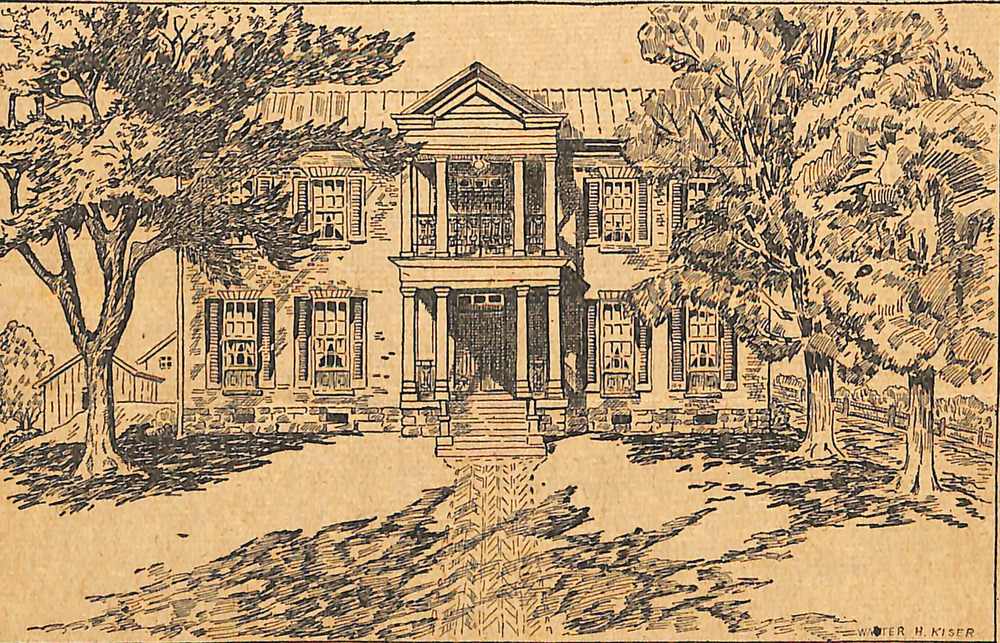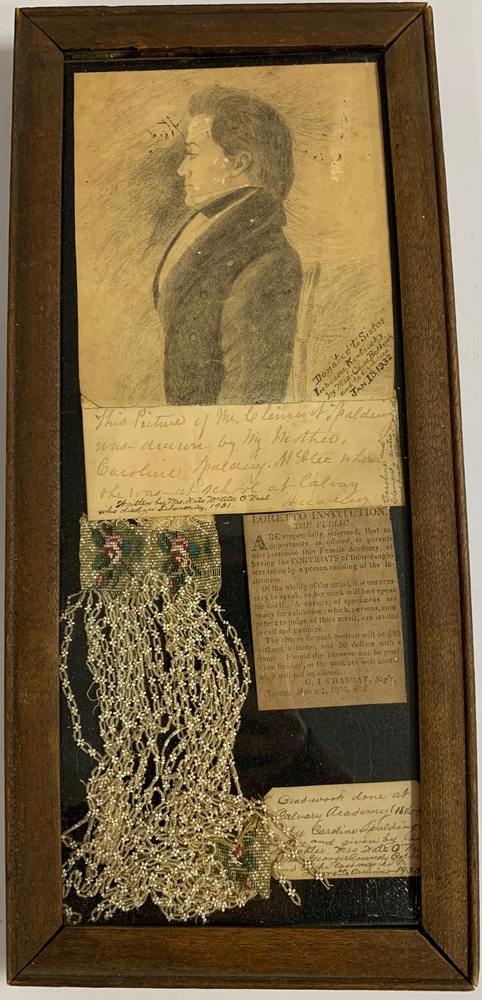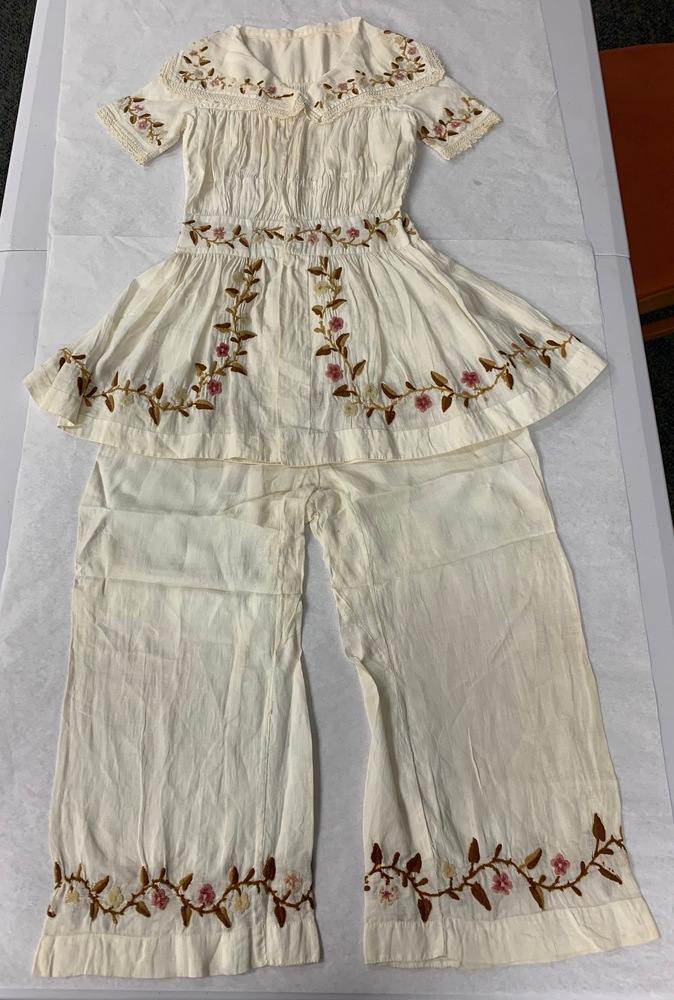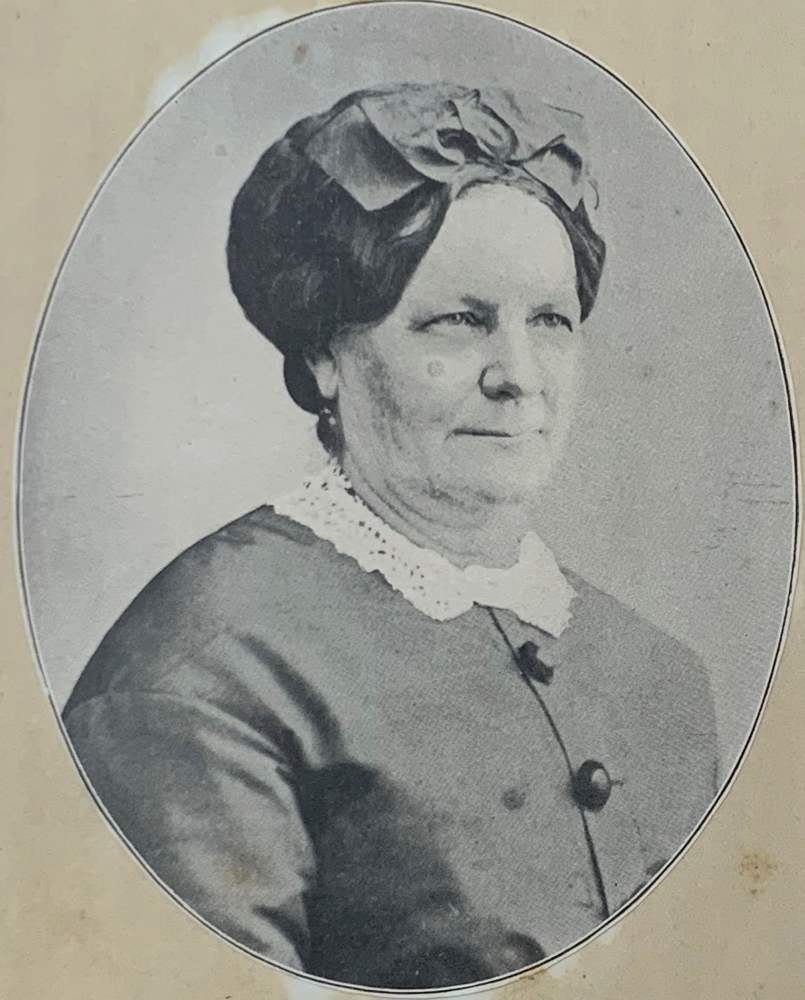The Spalding Women and Loretto
Posted on October 24, 2022, by Susanna Pyatt
Loretto numbers among its early students and Sisters several descendants of Benedict Spalding (1746-1815), one of the leaders of the Maryland-to-Kentucky Catholic migration. Benedict’s wife and children accompanied him in 1790, settling on the Rolling Fork River and prospering in the new Anglo-American communities of Marion County.
The Loretto Heritage Center has physical materials related to four women in the family of Benedict’s son, Richard A. Spalding (1777-1850). Like his father, Richard was a prosperous figure in the Kentucky Catholic community, donating the land for Holy Name of Mary Catholic Church in Calvary, KY. Richard’s branch of the Spalding family was quite large: married three times, he had over 20 children. Many of Richard’s children had their own families, while several chose to enter religious life. Most famous was Martin John Spalding (1810-1872), who became Bishop of Louisville and then Archbishop of Baltimore. While the men in the Spalding family were well-known leaders among early Catholic settlers and the establishment of the American Catholic Church, materials at the Loretto Heritage Center provide glimpses into the lives of some of the women in this family.

From the Loretto Heritage Center collections
Sisters Constantia and Perpetua Spalding
Richard Spalding’s eldest two children, Anastasia and Julia, joined the Sisters of Loretto in the 1810s. Anastasia (1803-1858) took the name Sister Constantia when she joined the congregation in 1817. She was assigned to Loretto Boarding and Day School in Lebanon in the mid-1830s, including one year as the Superior.
An 1831 letter from Sister Constantia to her brother Martin John describes part of convent and teaching life for early Loretto Sisters:
I spent my vacation studying philosophy. The Rd. Mr. Reynolds took us through the course, and I am now teaching it in our School. I have a Rhetorick class every day, and two History classes. We are studying the French language in the first style […] Yesterday our piano forte arrived. You will be surprised to hear that we are to teach music and French in our school next year.
Among the early Sisters who left the congregation, Sister Constantia is unusual in that we know some of the background for whyshe left. Letters from Constantia to her Mother General in the mid-1830s allude to painful rumors and conflicts against her within the congregation. These may have been related to other pressures facing Loretto in Lebanon at the time, including anti-Catholic controversies and conflicts over ecclesiastical debt.1 Constantia left the order in 1836 and married Ebenezer Howell, the father of two of her students, later that year. Ebenezer died in 1843. Constantia then remarried to Hoskins Hamilton. Even though she was released from her vows and married, she retained a sense of personal identity with Loretto, and her grave is marked with the name “Ann Constantia Spalding Hamilton.”
Unfortunately, much less is known about Constantia’s younger sister Julia (1805-1857). Julia joined Loretto in 1818, taking the name Sister Perpetua. She was also assigned to Loretto Boarding and Day School in Lebanon at some point, as well as to Calvary, also in Marion County. Perhaps Sister Perpetua even taught her half-sister Caroline.
Caroline Spalding McAtee
After the death of his first wife, Henrietta Hamilton Spalding, Richard Spalding remarried to another Henrietta, nee Thompson. This marriage produced at least four sons and one daughter, named Caroline (1817-1849). Caroline was enrolled as a student under the Sisters of Loretto at their academy in Calvary, KY. The Loretto Heritage Center has a small collage of schoolwork done by Caroline, pictured below. The charcoal sketch is of her half-brother, Clement Spalding (1814-1837). The other artifact created by her is a beadwork sample. Both of these are indicative of the types of work taught at the academy. Caroline went on to marry Alexius Joseph McAtee (1814-1893). She had four children during the 1840s before passing away at the young age of 31.

Mary Jane Lancaster Spalding (1816-1895)
Finally, another child of Richard Spalding, named Richard Marcus, married Mary Jane Lancaster (1816-1895). Like her sister-in-law Caroline, Mary Jane grew up within a large Catholic family in Marion County and was a student of the Sisters of Loretto. She attended Loretto Academy at the Loretto Motherhouse, becoming its first graduate in 1837. Records from Loretto Academy indicate that Mary Jane’s tuition was paid for in a mixture of cash and bushels of corn, not uncommon for the time. Both Mary Jane and her husband were highly educated for their time, her through her academy education and him through training that led him to become a mathematics professor and lawyer.
Mary Jane likely learned sewing and decorative needlework at home as well as at Loretto Academy. The Heritage Center has a suit made by Mary Jane for John Lancaster Spalding (1840-1916), the firstborn of her 8 children. Educated by Mary Jane at home until age 12, John went on to become the first Bishop of Peoria. Mary Jane and her husband raised their children at Evergreen Bend, one of the homes built by the extended Spalding family around Lebanon.2


From the Loretto Heritage Center collections
Endnotes
1 For more information, see C. Walker Gollar, “The Alleged Abduction of Milly McPherson and Catholic Recruitment of Presbyterian Girls,” Church History 65:4 (1996), 596-608.
2 J.J. Cosgrove, Most Reverend John Lancaster Spalding: First Bishop of Peoria (Wayside Press, 1960).
